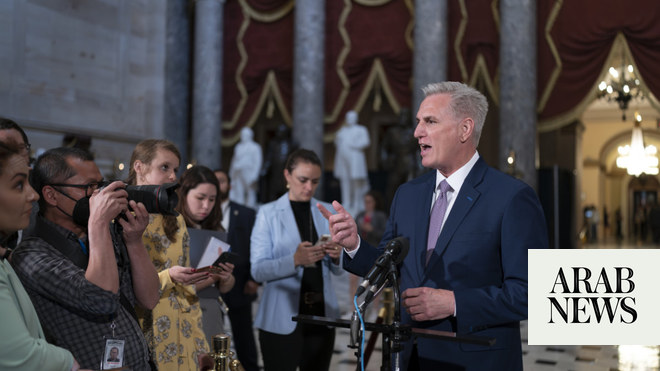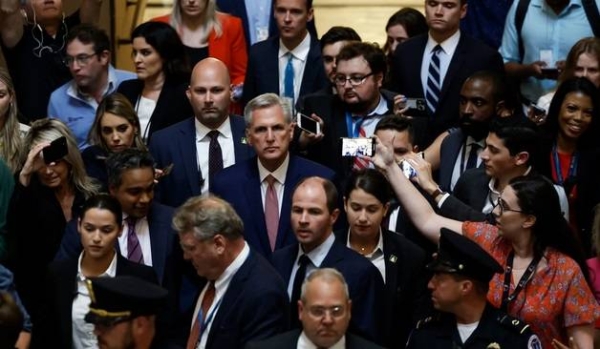
WASHINGTON, Oct 12 (Reuters) - The Democratic-controlled U.S. House of Representatives is expected on Tuesday to give final approval to a Senate-passed bill temporarily raising the government’s borrowing limit to $28.9 trillion, putting off the risk of default until early December.
Democrats, who control the House by a mere four-vote margin, were expected to maintain party discipline and pass the hard-fought, $480 billion debt limit increase here, only to face another deadline within weeks for avoiding both a historic debt default and a temporary government shutdown.
The Senate"s vote last week to raise the limit here - often a routine step - turned into a partisan brawl here, with Republicans trying to link the measure to President Joe Biden"s goal of passing a multitrillion-dollar pair of bills with spending to bolster infrastructure and social services while fighting climate change.
In fact, the vote is to cover past spending already approved by Congress, including during Republican Donald Trump’s presidency.
The Democratic-controlled Senate last Thursday passed the bill raising the $28.4 trillion statutory limit with the help of 11 Republicans, as the country crept closer to an estimated Oct. 18 deadline when the Treasury Department will no longer have the ability to make debt payments to lenders.
House Republicans are vowing to oppose it. Senate Republican leader Mitch McConnell, who was one of the 11 members of his party voting for the stopgap debt limit increase, has promised to withhold his support for another extension in December. He hopes to force Democrats to use a special “reconciliation” procedure allowing the next debt limit increase to be enacted just with Democratic votes.
House Speaker Nancy Pelosi, a Democrat, can afford to have only a few of her caucus members vote against the debt limit increase and still prevail on Tuesday.
On Sept. 29, two Democrats out of 220 voted against a separate bill to raise the debt limit through the end of 2022, while only one Republican voted in favor.
That measure was blocked in the Senate, which then had to resort to the much shorter increase now moving through Congress.
EYE ON 2022 ELECTIONS
On Sunday, Treasury Secretary Janet Yellen characterized the debt limit increase as a “housekeeping chore” to cover payments for spending bills and tax cuts already enacted into law.
But it has turned into a far bigger thing.
The months-long fight over the debt limit is closely tied to the November 2022 congressional elections when Republicans are trying to gain majorities in both chambers of Congress.
Democratic lawmakers fear that a Republican boycott of efforts to raise the debt ceiling will leave them exposed to political attack ads over the next year that accuse Democrats of fiscal malfeasance and disregard for the ballooning debt.
In a letter to Biden on Friday, McConnell wrote: “I will not be a party to any future effort to mitigate the consequences of Democratic mismanagement.”
During the Trump administration, the debt limit was raised three times with the support of Democrats, despite their uniform opposition to Republicans’ 2017 tax-cut legislation and some of Trump’s spending priorities, including the construction of a southwest border wall to keep out immigrants, all of which added to government debt. (Reporting by Richard Cowan; Editing by Scott Malone and Peter Cooney)
Our Standards: The Thomson Reuters Trust Principles.











